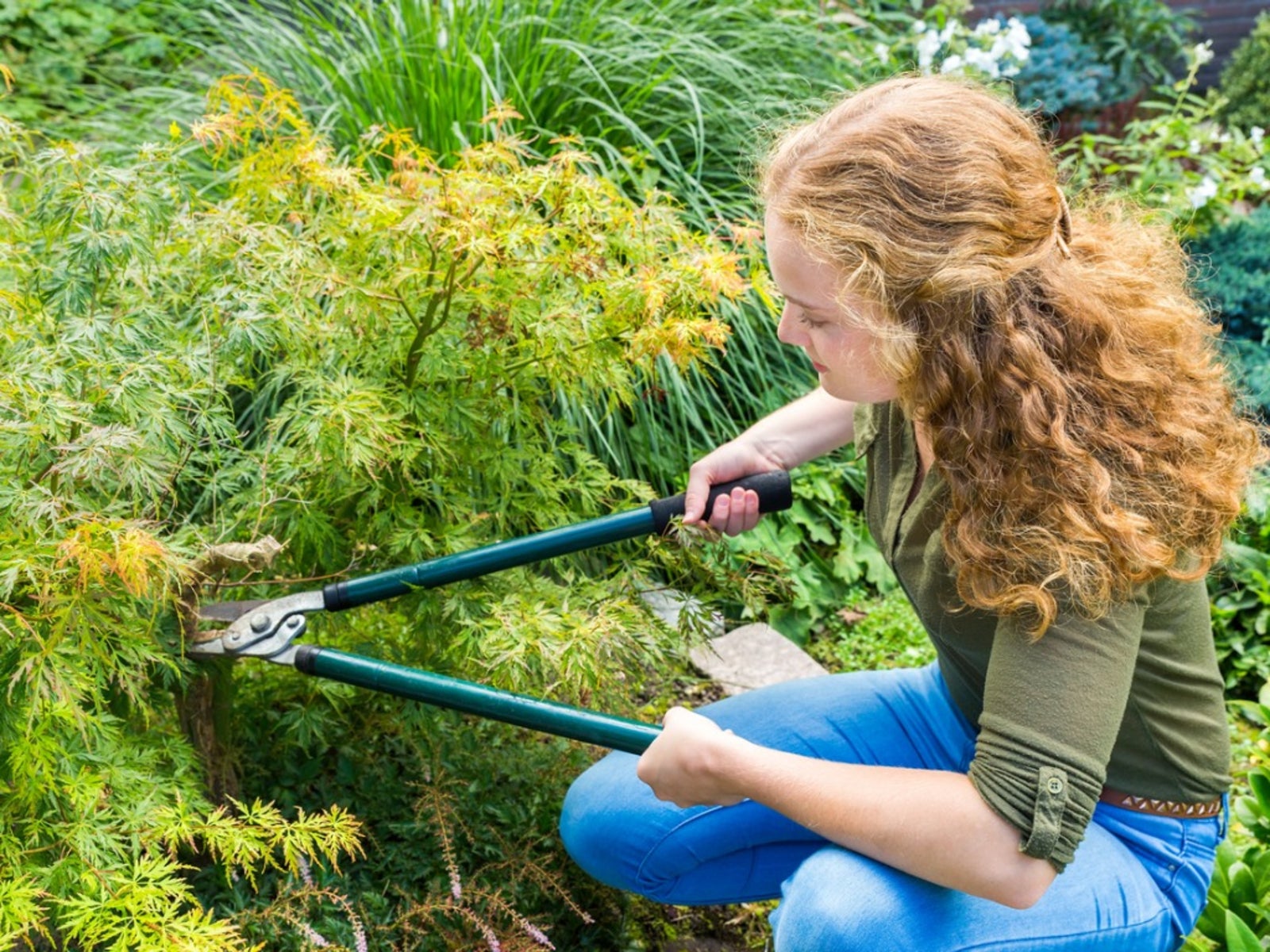Japanese Maple Care And Pruning - Tips For Japanese Maple Trimming


Japanese maples are spectacular landscape tree specimens that offer year-round color and interest. Some Japanese maples may only grow 6 to 8 feet (2 m.), but others will achieve 40 feet (12 m.) or more.
Pruning Japanese maples is rarely necessary in mature trees, if they have been trained when young. The graceful skeleton of the tree is accented by light trimming over the first few years of the tree's life. Learn how to prune a Japanese maple to enhance the attractive form of this beautiful tree.
Japanese Maple Care and Pruning
Japanese maples are deciduous trees that are used as ornamental shade specimens. Plants that are in light shade and protected from severe winds will need little supplemental care once established. Japanese maple care and pruning needs are minimal, which makes the tree an excellent choice for most garden needs.
These trees often have low-spreading canopies that arch out attractively, or may also be tall, angular trees with willowy limbs. Whichever type of Japanese maple you have, light trimming under the branches for access is recommended since the branches droop as the plant matures, and weighty limbs can grow too low and even put stress on the rest of the tree.
When to Prune a Japanese Maple
There are few rules on how to prune a Japanese maple. Late winter or early spring is when to prune a Japanese maple. This is its natural dormant period and less injury is caused by Japanese maple trimming during this time. For the most part, pruning Japanese maples is confined to removing dead wood and fine stems, which obstruct the handsome skeleton of the tree.
Young trees need to have the lowest limbs removed to enhance clearance. Begin training the tree when it is two or three years old. Remove any limbs that are rubbing against each other or are too close. Prune out small twigs and branches on the interior of the tree. This helps produce an attractive form and silhouette.
Pruning Japanese Maples
Any tree trimming requires sharp, clean tools. Sharp blades create smooth cuts that heal better and cause fewer traumas to the tree. Use a sharpener during the pruning process to keep the edge on any pruning tools. Make sure they are clean by wiping the blades with a light bleach and water solution to prevent spreading diseases that might have been acquired from other plants.
Sign up for the Gardening Know How newsletter today and receive a free copy of our e-book "How to Grow Delicious Tomatoes".
The general rule of thumb, even on neglected older trees, is to remove no more than 30 percent of the plant in any year. Make slow, careful cuts as you assess your progress. Step back frequently when Japanese maple trimming. This will allow you to see the whole tree and plan the next cut to preserve and enhance the natural shape of the plant.
Pruning Japanese maples is a low maintenance chore if done annually. This will guarantee a healthy, beautiful tree that will grow strong and add years of beauty to your home landscape.

Bonnie Grant is a professional landscaper with a Certification in Urban Gardening. She has been gardening and writing for 15 years. A former professional chef, she has a passion for edible landscaping.